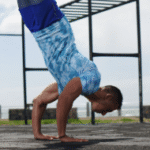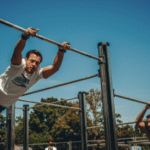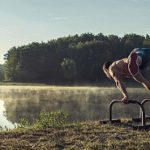Contrast Therapy for Target Audience
Okay, let’s break down **Contrast Therapy** in detail, focusing on how its benefits and considerations apply to **different target audiences** within the **USA** as of April 15, 2025.
**Introduction: What is Contrast Therapy?**
Contrast Water Therapy (CWT), or simply contrast therapy, is the practice of alternating immersion of the body (or specific limbs) in hot water and then cold water. This technique leverages the body’s physiological responses to distinct temperature changes and has gained significant popularity in the US across various groups seeking enhanced recovery, resilience, and overall well-being. While the core practice is the same, the specific goals, protocols, and considerations can vary depending on the target audience.
**General Proposed Benefits Recap:**
Across different groups, contrast therapy is often sought for its potential to:
* Improve circulation (via vasodilation/vasoconstriction).
* Reduce muscle soreness (DOMS) and perceived fatigue.
* Decrease inflammation and swelling.
* Provide temporary pain relief (analgesia).
* Enhance mental alertness and resilience.
* Promote relaxation (especially post-session).
**Tailoring Contrast Therapy for Different Audiences in the USA:**
**1. Athletes (Competitive, Collegiate, High School, “Weekend Warriors”)**
* **Primary Goal:** Accelerate **recovery** between training sessions or competitions, reduce muscle soreness (DOMS), manage exercise-induced inflammation, and potentially enhance performance readiness.
* **Why it’s Relevant:** Intense physical exertion causes micro-trauma, inflammation, and metabolic byproduct accumulation. Athletes constantly seek ways to speed up the body’s natural repair processes.
* **Specific Benefits Focus:** Reduced DOMS severity and duration, faster resolution of perceived muscle fatigue, potentially quicker return to peak performance levels, management of minor strains/sprains (post-acute phase).
* **Considerations/Protocols (USA Context):** Athletes often have access to dedicated facilities (training rooms, recovery centers common in US collegiate/pro settings) with specific hot/cold plunge tubs. Protocols like 3:1 or 1:1 (hot:cold minutes) are common post-exercise. Timing (immediately post-exercise vs. later) might be adjusted based on training goals (e.g., some debate if immediate cold immersion slightly blunts hypertrophy signals). Professional guidance from athletic trainers or sports physical therapists is often available.
**2. Fitness Enthusiasts & Regular Gym-Goers**
* **Primary Goal:** Manage general post-workout soreness, improve consistency by feeling less stiff or tired for the next session, general wellness, stress relief.
* **Why it’s Relevant:** Consistent exercise routines still lead to muscle fatigue and soreness that can impact motivation and daily comfort.
* **Specific Benefits Focus:** Making regular exercise more sustainable by reducing discomfort, promoting relaxation after a workout, potentially improving circulation.
* **Considerations/Protocols (USA Context):** Often utilize facilities within commercial gyms or wellness centers in the US, which may have standard hot tubs and increasingly, cold plunges. They might need more self-guidance on protocols – starting conservatively (e.g., 10-15 min total, moderate temperatures) is key. Focus is often less on peak performance recovery and more on general well-being and consistency.
**3. Individuals Seeking Stress Reduction & Mental Resilience**
* **Primary Goal:** Manage daily stress, improve mood, build mental toughness, enhance focus and clarity.
* **Why it’s Relevant:** This audience, often part of the growing wellness and “biohacking” communities in the USA, uses contrast therapy as a tool for nervous system regulation and mental conditioning.
* **Specific Benefits Focus:**
* **Hormesis:** Using temperature stress to build resilience.
* **Neurochemical Boost:** Triggering norepinephrine (alertness, focus) and dopamine/endorphins (mood) via cold exposure.
* **Mindfulness Practice:** Focusing on breath and body sensations during intense temperatures.
* **Parasympathetic Rebound:** Experiencing deep relaxation after the stress of the temperature shifts.
* **Considerations/Protocols (USA Context):** The *ritual* aspect is often emphasized. May involve incorporating breathwork or meditation. Protocols might vary greatly based on personal goals – some may focus more on the cold exposure for the mental “jolt.” Consistency is seen as key to building resilience over time.
**4. People with Certain Chronic Pain Conditions (e.g., Fibromyalgia, some forms of Arthritis) ***WITH MEDICAL GUIDANCE ONLY***
* **Primary Goal:** Temporary **symptom management** – reducing pain perception, easing joint stiffness, potentially reducing localized inflammation during flare-ups.
* **Why it’s Relevant:** Heat can soothe stiff joints and relax muscles, while cold can numb pain and reduce swelling. The alternating effect might offer combined benefits for some types of chronic musculoskeletal pain.
* **Specific Benefits Focus:** Temporary pain relief (analgesia), reduced morning stiffness, improved sense of well-being (if it helps manage symptoms).
* ****CRITICAL Considerations & Precautions (USA Context):****
* **Must Consult a Doctor/Physical Therapist First:** Contrast therapy is **NOT** a cure and can be **contraindicated** for certain conditions (e.g., severe peripheral neuropathy, certain vascular diseases, acutely inflamed rheumatoid arthritis might not tolerate heat well).
* **Individualized Protocols:** Temperatures and durations must be carefully managed – often gentler than athletic protocols. Heat might be emphasized more for stiffness, cold for acute pain/swelling phases.
* **Focus on Safety:** Impaired sensation can increase burn/cold injury risk. Careful monitoring is needed.
**5. Post-Surgical/Rehabilitation Patients ***UNDER PROFESSIONAL SUPERVISION ONLY***
* **Primary Goal:** Used by physical therapists in the US as a **modality** during specific phases of rehabilitation to control pain, manage swelling (edema), and potentially improve circulation to aid healing *after* the initial acute inflammatory phase.
* **Why it’s Relevant:** Temperature can modulate pain and inflammation, potentially facilitating participation in therapeutic exercises.
* **Specific Benefits Focus:** Edema reduction, pain modulation, promoting tissue healing (via circulatory effects).
* ****CRITICAL Considerations & Precautions (USA Context):****
* **Professional Direction Required:** This should **ONLY** be done when prescribed and supervised by a qualified physical therapist or physician as part of a formal rehabilitation plan.
* **Contraindications:** Absolutely contraindicated over open wounds, surgical incisions until fully healed, areas with infection, impaired sensation, certain vascular grafts, or during specific post-op phases where temperature extremes are disallowed.
* **Highly Specific Protocols:** The therapist dictates exact temperatures, durations, timing, and application methods based on the specific injury, surgical procedure, and stage of healing. **Do NOT attempt this independently post-surgery.**
**General Considerations for All Audiences in the USA:**
* **Individual Variability:** People respond differently to heat and cold. What works for one person may not work for another.
* **Consistency:** Regular, appropriately dosed sessions generally yield more noticeable effects than sporadic ones.
* **Safety First:** Always prioritize safety:
* **Hydrate well**, especially before and after heat exposure.
* **Start gradually** with moderate temperatures and shorter durations.
* **Listen to your body:** Exit immediately if you feel unwell, dizzy, excessively numb, or experience pain.
* **Know contraindications:** Especially crucial for those with cardiovascular disease, hypertension, diabetes, Raynaud’s, pregnancy. **Consult your doctor if unsure.**
* **Avoid alcohol/drugs** before or during therapy.
* **Don’t cold plunge alone.**
**Conclusion:**
Contrast therapy is a versatile tool gaining widespread use across various audiences in the USA. While athletes often focus on accelerating physical recovery, others may use it primarily for stress management, mental resilience building, or, under strict medical guidance, for symptom management in certain chronic pain or rehabilitation scenarios. Understanding the specific potential benefits and crucial safety considerations relevant to each target audience is key. Regardless of the group, maximizing benefits safely requires listening to one’s body, adapting protocols as needed, ensuring consistency, and always prioritizing health by seeking professional medical advice when dealing with underlying conditions or injuries.

Contrast Therapy for Target Audience
Route
Calisthenics Gym Houston Functional Bodyweight Training
Secondary phone: (346) 483-3195
Email: info@calisthenicsclubhouston.com
URL: https://calisthenicsclubhouston.com/
Monday 6:00 AM - 7:00 PM Tuesday 6:00 AM - 7:00 PM Wednesday 6:00 AM - 7:00 PM Thursday 6:00 AM - 7:00 PM Friday 12:00 PM - 6:30 PM Saturday 9:45 AM - 12:00 PM Sunday 3:00 PM - 5:00 PM





